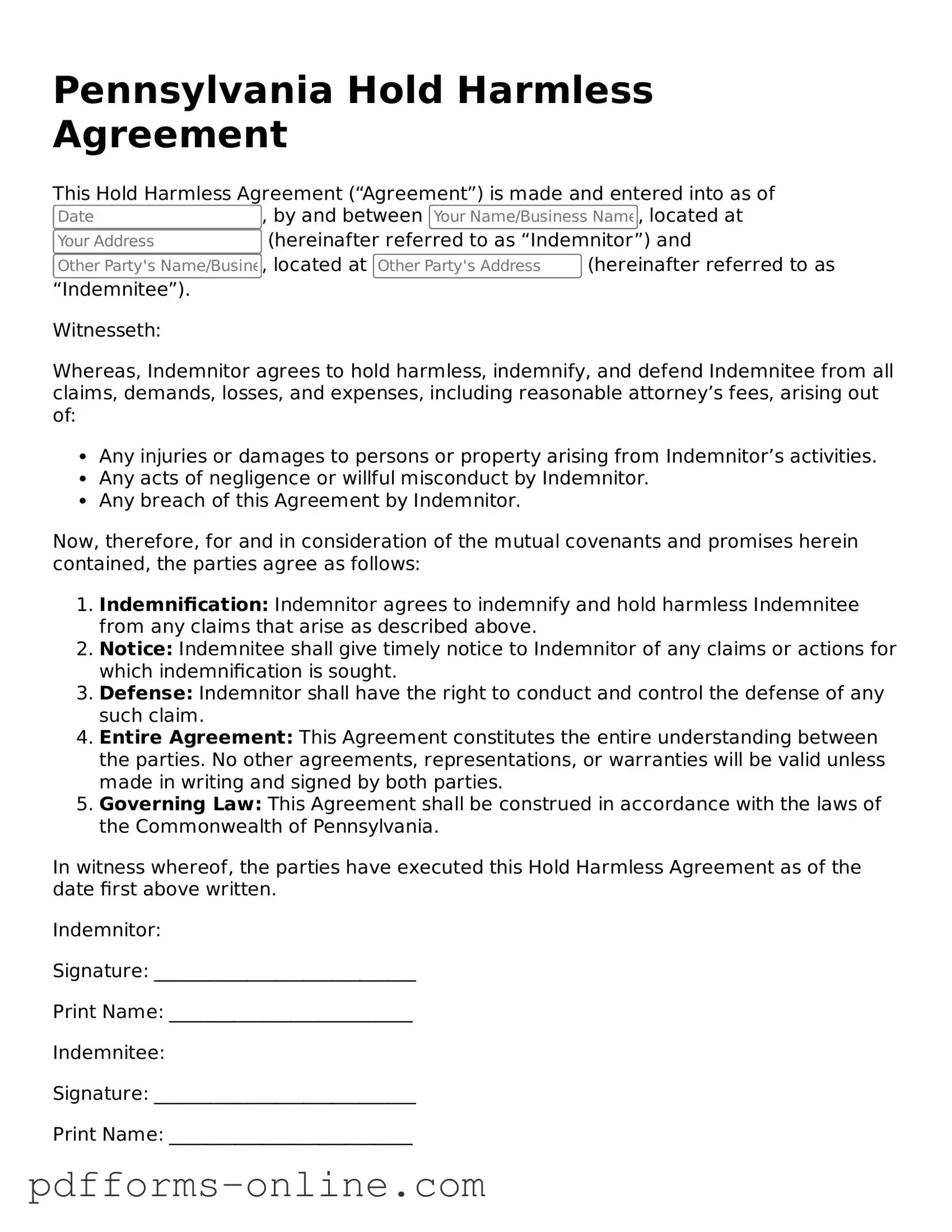A Waiver of Liability is a document that protects one party from being held liable for any injuries or damages that may occur during an event or activity. Much like the Hold Harmless Agreement, it requires the participant to acknowledge the risks involved and agree not to hold the organizer responsible for any accidents. This document is often used in sports, recreational activities, and events where participants engage in potentially risky behavior.
A Release of Liability serves a similar purpose to the Hold Harmless Agreement, as it releases one party from legal claims made by another party. In this document, the individual agrees not to pursue legal action in exchange for participation in an activity or event. Both documents aim to minimize legal exposure and clarify responsibilities, ensuring that parties understand the risks involved.
An Indemnity Agreement is another document that shares similarities with the Hold Harmless Agreement. This type of agreement focuses on one party agreeing to compensate another for any losses or damages incurred. While the Hold Harmless Agreement primarily protects against claims, an Indemnity Agreement often involves financial compensation for damages, making it a bit more comprehensive in certain contexts.
An Insurance Policy is a formal contract that provides financial protection against specific risks. While not a direct substitute for a Hold Harmless Agreement, both documents serve to mitigate risk. An insurance policy can cover damages or liabilities that arise, while a Hold Harmless Agreement shifts the responsibility away from one party to another, creating a safety net for both involved.
A Consent Form is often used in medical or research settings, allowing individuals to participate in studies or treatments after being informed of the risks. Like the Hold Harmless Agreement, a Consent Form requires participants to acknowledge potential dangers. Both documents emphasize informed consent and the understanding of risks associated with participation.
A Rental Agreement can also be compared to the Hold Harmless Agreement, particularly when it includes clauses that protect the property owner from liability. In a rental context, tenants often agree to hold the landlord harmless for any injuries that occur on the premises. This establishes clear boundaries regarding responsibility and liability for both parties involved.
A Non-Disclosure Agreement (NDA) may not seem directly related, but it shares the theme of protecting one party from potential harm. An NDA ensures that sensitive information remains confidential, preventing one party from disclosing it to outsiders. While the focus is different, both agreements aim to safeguard interests and minimize risks associated with sharing or participating in activities.
A Service Agreement can resemble a Hold Harmless Agreement when it includes liability clauses that protect one party from claims arising from the services provided. This document outlines the responsibilities of each party and often includes indemnity provisions. Both agreements work to clarify expectations and protect against unforeseen liabilities.
A Partnership Agreement may also incorporate elements similar to a Hold Harmless Agreement. In this context, partners may agree to indemnify each other for certain liabilities incurred during the partnership. This creates a framework for accountability and risk management, ensuring that all parties understand their obligations and protections within the business relationship.
A Construction Contract often includes clauses that hold contractors harmless for specific liabilities. This document outlines the responsibilities of the contractor and the property owner, similar to a Hold Harmless Agreement. Both documents aim to protect parties from potential claims arising from accidents or damages during the execution of work, establishing clear guidelines for liability.
